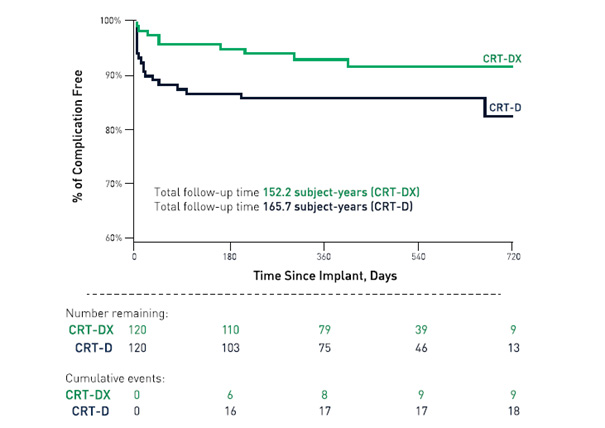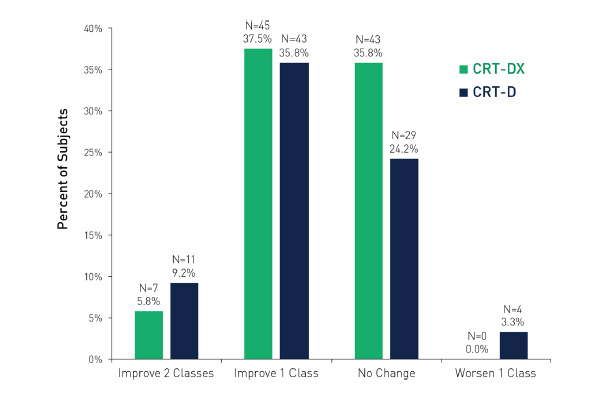Key Results
A subanalysis of 120 matched pairs of CRT-and CRT-DX patients included in the study demonstrated that the CRT-DX system can provide similar CRT responses and significantly fewer complications when compared to a similar cohort with a conventional three-lead CRT-D system.

Figure 1: Freedom from primary endpoint major complications over total follow-up.

Figure 2: NYHA changes at 6 months follow-up. All percentages are displayed as absolute percentages (out of 120 subjects).
